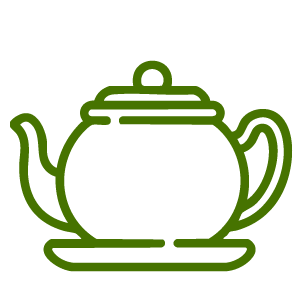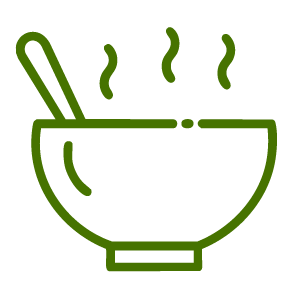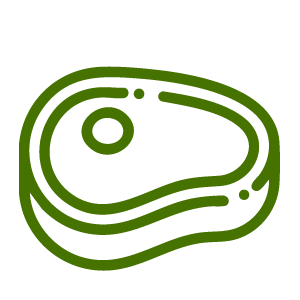Ora Iron Protocol
This protocol aims to educate, deepen knowledge and guide the body toward optimal iron levels through food, herbs, and aligned living.
Understanding Iron
Iron is essential for energy, cognitive function, and cellular oxygenation. Without enough, the body struggles—fatigue lingers, immunity dips, and vitality wanes. Over the years of working one-on-one with clients, I’ve seen countless women grappling with the effects of low iron—deep exhaustion, poor recovery, and a sense of never feeling fully replenished. It became clear that many were missing the right support to truly restore their levels. This inspired me to formulate Iron Rich Tonic+ with Ora, blending highly absorbable iron with medicinal herbs to nourish the body on a deeper level. This protocol is designed to replenish, restore, and sustain optimal iron levels with a whole-body approach.
How to spot signs of iron deficiency
Persistent fatigue, even after rest
Shortness of breath especially during physical activity
Dizziness and light-headedness
Pale skin
Brittle nails
Cold hands and feet
Restless legs
Poor sleep quality
Irritability
Focus and memory challenges
Reoccurring colds and flus
Hair shedding and thinning
Headaches
Heart palpitations
How to test and monitor iron via blood pathology
Before supplementing, it’s vital to assess where your iron levels are at. The below markers are a quick guide to understanding which tests to request and why they are important.
Serum Ferritin
Your iron storage levels, aim for at least 80 ng/mL for optimal health.
Serum Iron & Transferrin Saturation
These indicate how well iron your is circulating.
Total Iron Binding Capacity (TIBC)
This reflects absorption and utilisation of iron.
Complete Blood Count (CBC)
This checks for anaemia via red blood cells measurements.
If you suspect you have low iron, it is best to work with a wonderful practitioner to test and track your levels when implementing supplementation.
Daily Iron Protcol
A gentle guide to support you alongside taking Iron-Rich Tonic+
Morning
Take Iron Rich Tonic+ on an empty stomach, if tolerated or after a well-balanced breakfast.
Lunch
Build an iron-rich meal with protein, greens, and healthy fats.
Afternoon
A warming herbal infusion of nettle leaf, dandelion root, and ginger supports digestion and liver function.
Dinner
Include slow-cooked meats or iron-rich plant sources with fermented foods to optimise gut health.
Adding Iron To Your Diet
There are two different types of iron available from whole foods, one is animal based and the other is plant based.
Heme Iron
Animal Based
The most bioavailable. Grass-fed red meat, liver, wild-caught fish, pasture-raised eggs.
Non-Heme Iron
Plant Based
Lentils, chickpeas, tofu, pumpkin seeds, leafy greens, dried apricots, blackstrap molasses.
Boost and Reduce
Our bodies need to work a little harder to absorb plant-based sources, so it is a great idea to pair them with foods rich in supportive nutrients to enhance absorption.
BOOST - Vitamin C Rich Foods
All citrus fruits, kiwi, capsicums, berries, pineapple, papaya, guava and tomatoes.
BOOST - Betaine Rich Gut Loving Foods
Beetroot and fermented foods, miso, kefir, kimchi, sauerkrauts.
REDUCE - Iron Inhibitors
Avoid caffeine rich tea, coffee and high-calcium meals (such as dairy) around iron intake.
Iron and The Wholebody Connection
Iron metabolism is influenced by more than just nutritional intake—it’s all about stress, digestion, and inflammation. In her book The Plant Clinic, Erin introduces her Pillars to Thrive: hydrate, good food, rest, body movement, self talk and connect with nature. These six pillars activate the physical, mental, emotional and spiritual bodies and they are essentially non-negotiable building blocks for everyday vibrant health and wellbeing. Below is a modified version to help level-up your Ora Iron Protocol.
Gut Health
Your gut is the gateway to nourishment—without a thriving microbiome, iron absorption can be compromised. The balance of beneficial bacteria plays a crucial role in breaking down food, synthesising nutrients, and supporting overall digestion.
Incorporate Probiotic-Rich Foods
Fermented vegetables (sauerkraut, kimchi), kefir, kombucha, miso, and yogurt (if tolerated) provide live cultures to strengthen microbial diversity.
Feed the Good Bacteria
Prebiotic fibres found in garlic, onions, leeks, asparagus, and oats fuel the beneficial bacteria that enhance nutrient uptake.
Support Stomach Acid Production
Low stomach acid reduces iron absorption. Stimulate digestion with lemon water, bitter greens, and mindful eating practices.
Reduce Inflammation
Avoid excessive refined sugar, processed foods, and alcohol, which can disrupt the gut lining and hinder iron metabolism.
Stress Reduction
Chronic stress taxes the body, depleting essential minerals and disrupting digestion. When the nervous system is in a constant state of fight-or-flight, stomach acid production slows, enzyme activity decreases, and nutrient absorption weakens—directly impacting iron levels.
Prioritise Nervous System Regulation
Daily mindfulness, meditation, or gentle breathwork (such as diaphragmatic breathing or alternate nostril breathing) can shift the body into a parasympathetic state, where digestion thrives.
Grounding Practices
Spend time barefoot on the earth, soak in natural light, and connect with nature to recalibrate your stress response.
Herbal Allies for Resilience
Taking adaptogens like ashwagandha, holy basil, and reishi, which are all found in Ora’s Adrenal Tonic+, help buffer the effects of stress while supporting overall vitality.
Movement
Physical activity plays a crucial role in iron metabolism, supporting oxygen transport, circulation, and energy production. However, balance is key—overexertion without proper recovery can deplete iron stores.
Gentle, Oxygenating Movement
Walking, yoga, Pilates, and breath-focused exercise enhance circulation without excessive strain.
Strength & Resistance Training
Builds muscle and supports the production of red blood cells, particularly beneficial for menstruating women.
Avoid Overtraining
Intense endurance exercise can deplete iron through sweat loss and increased red blood cell turnover. Support recovery with adequate rest, hydration, and mineral replenishment.
Rest
Sleep is not just rest—it is a time of deep repair, where red blood cells regenerate, tissues restore, and the nervous system recalibrates. Without quality sleep, energy wanes, iron metabolism slows, and the body struggles to maintain balance.
Align with Natural Rhythms
Honour the body’s internal clock by maintaining a consistent sleep-wake cycle, allowing the circadian rhythm to regulate energy and hormone balance.
Create an Evening Ritual
Signal to your body that it’s time to unwind—sip a warm herbal tea infusion (like chamomile or passionflower) engage in slow, intentional movement like yin yoga, or practice deep belly breathing to shift into a parasympathetic state.
Dim the Lights, Reduce Stimulation
Lower artificial lighting in the evening and limit blue light exposure from screens, which can suppress melatonin production and disrupt deep sleep cycles.
Nourish for Restorative Sleep
Avoid heavy meals, caffeine, and stimulants close to bedtime. Instead, opt for mineral-rich foods like pumpkin seeds (magnesium), tart cherry (natural melatonin), and protein to stabilise blood sugar through the night.
Create a Sleep Sanctuary
Keep the bedroom cool, dark, and free from distractions. Weighted blankets, essential oils (lavender, cedarwood), and white noise can enhance sleep quality.
Sleep-supporting herbs and supplements
If you’re needing just a little more support, try a high quality sleep supplement like Ora’s Profound Sleep.
Cyclical Support
For menstruating individuals, iron loss through blood flow increases the need for replenishment. Honouring this cycle with nourishing practices helps sustain energy and prevent depletion.
Post-Bleed Recovery
After menstruation, focus on iron-rich foods paired with vitamin C to restore levels efficiently. Slow-cooked meats, lentils, pumpkin seeds, and beetroot are deeply replenishing.
Blood-Building Herbs
Nettle, raspberry leaf, and dong quai support red blood cell production and hormonal balance.
Restorative Practices
The post-menstrual phase is a time to rebuild—prioritise nutrient-dense meals, deep rest, and gentle movement to restore vitality.
Rebalance Your Hormones
The fluctuation of hormones throughout your cycle can put additional stress on the body. Keep your hormones balanced any time during your cycle with herbs like Maca and Shatavari or a high quality blend like Ora’s Hormonal Balance.
Dosing Guide
Supporting iron levels is not a one-size-fits-all approach—different life stages and cycles call for tailored nourishment. Iron Rich Tonic+ is designed to be gentle yet effective, delivering a bioavailable form of iron alongside medicinal herbs that support absorption, digestion, and overall vitality. If you tend to experience digestive discomfort or nausea with iron supplements, try splitting your dose into two smaller servings throughout the day and taking it after meals. This gentle approach supports absorption while being kinder to your digestion.
-
Gentle Support for Growing Bodies
Dose: 10ml per day or 5ml, twice daily
Iron is a crucial building block for growth, cognitive development, and immune resilience in children. This gentle, well-absorbed formula ensures little bodies receive the iron they need without common digestive discomforts. Best taken with or after meals to support absorption.
-
Daily Replenishment for Energy & Vitality
Dose: 20ml per day or 10ml, twice daily
For those needing consistent iron support, this daily dose works to restore and maintain healthy iron levels, promoting sustained energy, cognitive clarity, and immune strength. For optimal absorption, take away from tea, coffee, or calcium-rich foods, and pair with vitamin C-rich foods like citrus or berries.
-
Cyclical Replenishment
Dose: 20ml per day or 10ml twice daily, starting from the first day of your menstrual bleed and continuing for 10 days.
Blood loss during menstruation increases iron demands, and for many, this is when levels begin to dip. Supporting iron stores during this phase helps prevent depletion, aiding in recovery and sustaining energy post-bleed. For best results, integrate this dosing rhythm alongside iron-rich, blood-building foods and rest as needed.
How to Know if Iron Rich Tonic+ is Working for You
As your body begins to replenish its iron stores, you may start to notice subtle yet powerful shifts. Within the first few weeks, improvements in energy levels, mental clarity, and overall vitality may become apparent. You might feel less fatigued upon waking, experience steadier focus throughout the day, and notice fewer signs of breathlessness or dizziness.
However, true iron restoration takes time. Retesting your iron levels too soon can lead to inaccurate readings, as it takes a minimum of three months for iron stores to rebuild and reflect in bloodwork. Patience is key—give your body the time it needs to absorb, utilise, and integrate the iron before reassessing.
For those who have experienced long-term iron deficiency, deeper replenishment may take longer. Depending on individual needs, ongoing supplementation beyond six months may be necessary to achieve and sustain optimal iron levels. Trust the process, support your body with nutrient-dense foods, and tune in to the gradual but meaningful improvements along the way.








